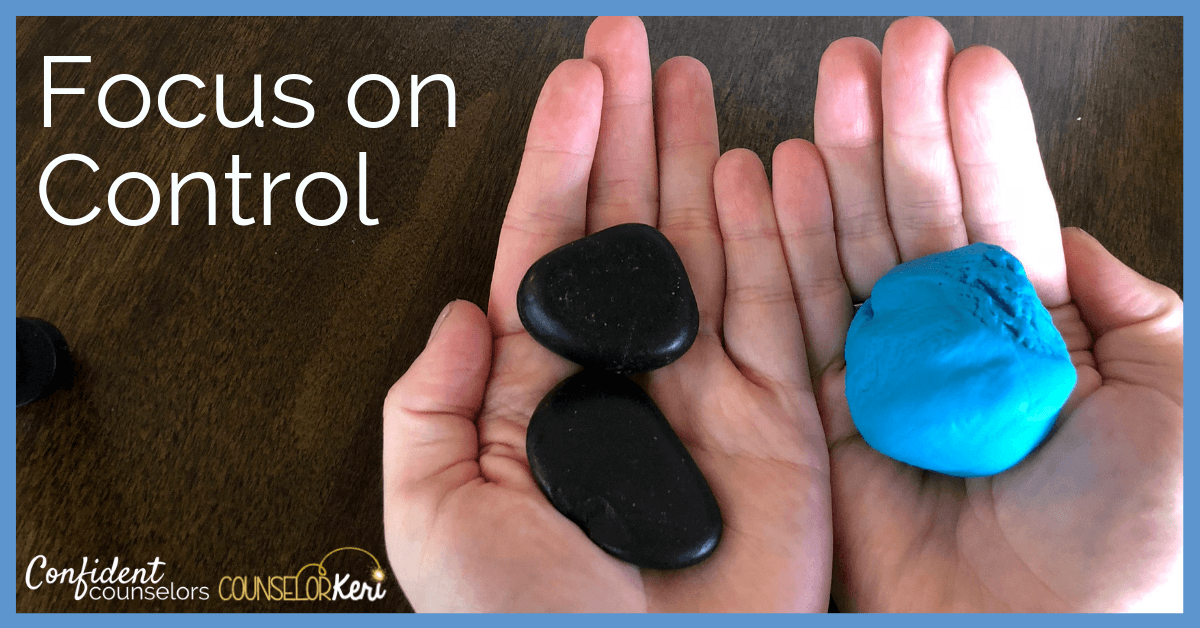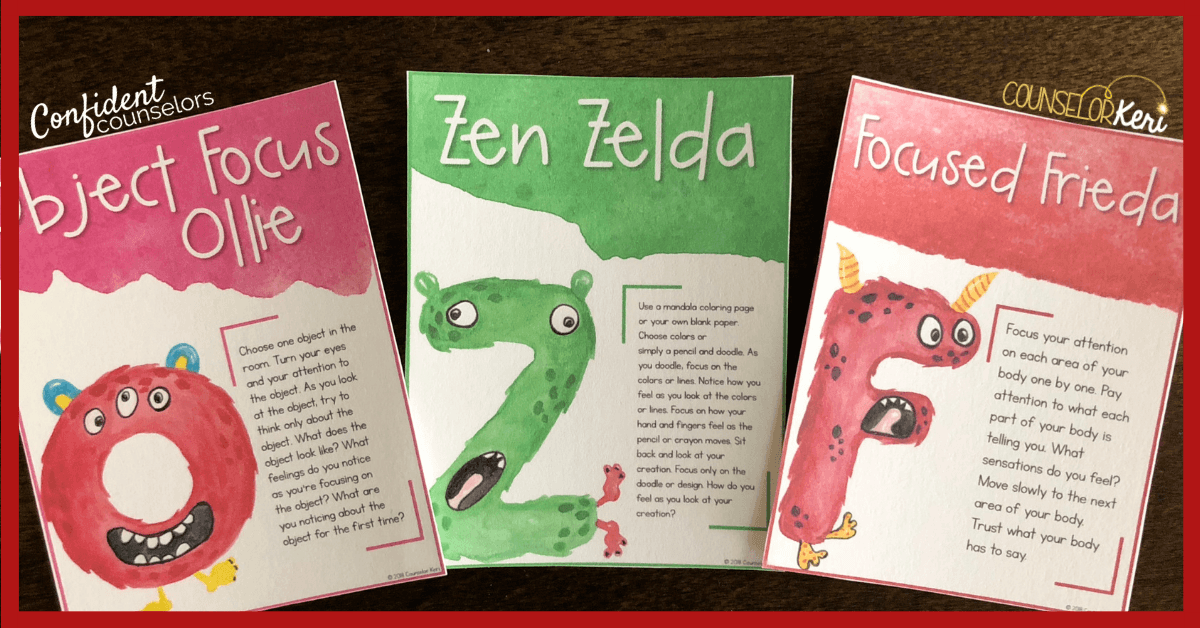One box I can always count on being checked on the needs assessment is ☑WORRY. Our students are coming to school with worries about friendships, home life, their school performance and so much more. Researchers estimate that nearly 32% of adolescents (ages 13-18) experience an anxiety disorder. Additionally, in a survey of children aged 10-11 in England and Scotland, 40% of students said their worries get in the way of their school performance. So how can school counselors help kids with worry? Keep reading to find 10 ways to support your students.
10 Ways to Help Kids With Worry
Psychoeducation
Teach students what worry is and how it affects their thoughts, feelings, and actions. Worries can be magnified when students cannot understand what they are, why they’re happening, and their effects. Help your students understand the signs and symptoms of worry, and explain how you will work together to address them. Don’t be afraid to use words like amygdala, hippocampus, and fight or flight! The students I’ve worked with really want to know what’s going on and jump at the chance to learn about their brains and bodies.
To help students understand what worry is, I like to use an analogy: worry is like carrying a big stack of books. The stack is so tall that it blocks our eyes. We can’t see anything but the big stack of books. If we try to look around the stack, we might get a little glimpse of something else, but the stack might start to wobble so we have to give all of our focus to the books. Our muscles might start to get tense because the stack is heavy. Our backs might start to hurt after carrying the books for a while. We might start to feel frustrated or overwhelmed after giving all of our attention to the books for so long because we can’t enjoy anything else. Worry can feel the same way. It’s hard to focus on anything but our worries. Worries might block our view of what’s actually happening and take a toll on our whole bodies.
Keep a Journal
Help your students to keep a journal of their worries. They can note their actual worries, the location and time of their worries, and how they feel in their bodies when the worries invade. This will help students to recognize patterns in their worries. They might notice worries are more prevalent during group projects or while they’re on the bus. Your students might notice their worries tend to be about speaking up in a group no matter the location. They might also pick up on physiological symptoms and clues that will help them to better recognize worry triggers in the future so that they can utilize management skills.
Name It
Help your students to see their worries as separate from themselves. They can personify their worries as scary monsters, annoying buzzing bees, or some other creature. Students can name their worry creature so that they can talk to it, refute its statements, and give it explicit directions like, “Stop buzzing in my ear, Worry Bee! I’m not listening to you anymore.”
Self-Talk
Help your students develop self-talk messages to remind them of their power over their worries. Then, practice saying them aloud. Give your student sticky notes or index cards to write the self-talk messages on and place them in areas they will see like on a mirror at home or the inside cover of a notebook. If your student is worried about speaking up in class, his self-talk messages might sound like
- My ideas and questions are important too.
- I can raise my hand.
- My ideas help our class grow.

Grounding Exercises
For in-the-moment worry management, teach your student to utilize grounding exercises. Here are my 3 go-to grounding methods:
- Name 5 things you see, 4 things you hear, 3 things you can touch, 2 things you smell, and 1 thing you can taste.
- Name 5 colors you see, 4 sounds you hear, 3 shapes you see, 2 things you can hold in your hand, and say 1 thing you can do right now.
- Stand or sit firmly in place. Feel the weight of your feet on the ground. Wiggle your toes and notice how they feel as they tickle the ground. Raise and lower your heels. Notice how your heels press into the ground as you come back down. Say, “I am firmly planted in [this place].”
Breathing Exercises
Another tool to use in the moment is controlled breathing. Students can utilize breathing exercises to calm their racing heart rate or breathing rate when worries seem overpowering. Here are 3 breathing exercises to try with your students:
- Bee breathing: Breathe in deeply through your nose counting to 4. Hold the breath for a count of 4 and then blow it out while buzzing like a bee. If you’re working with a group, see who can draw out their buzzing the longest to encourage students to slow the exhale.
- Animal friend breathing: This can be done with any kind of stuffed animal. Students will lie on their backs on the floor and place a stuffed animal on their bellies. Inhale for a count of 4, watching the animal rise up as their lungs are filled with air. Hold the breath for a count of 4 and then slowly release for a count of 7, watching the animal slowly fall back down. This method helps students to really visualize the rise and fall of their breaths.
- Lazy 8 breathing: For a silent, seated breathing exercise students can do anywhere, practice lazy 8 breathing. Give students a printable of the number 8 lying on its side. Students begin on one side of the 8, tracing it with their fingers. The will inhale as they trace half of the 8 and exhale as they trace the other half of the 8.

Focus on Control
Some students come to their school counselors with some very real worries from home. Help your students to understand what they can and cannot control and then focus on the things they can actively do to help themselves.
To help students understand this, I like to use a rock and play dough. The rock represents things we cannot control. The playdough represents things we can control. What happens when we squeeze a rock? Nothing. We can’t change the rock. What happens when we squeeze play dough? We can shape it, mold it, and change it. The same is true for worries. When we worry about things outside of our control, we do not change them. When we instead focus on things we can control, we can make positive changes to help ourselves feel better.

Give Away Worries
Create a space where students can write down their worries and give them away, leave them behind, or tear them up! The act of giving away their worries is helpful for some students to let go before going to class. Others will enjoy tearing up a paper with their worries as they can visualize themselves destroying the worry.
I have a brief story about a whale who teaches students some breathing and grounding exercises to use when they are feeling worried. Then, the whale offers to take on students’ worries when they just can’t hang on to them by themselves. Students write their worries on a fish and then feed them to the whale!
Practice Mindfulness
Much like the grounding exercises, practicing mindfulness will help your students focus on the present moment and pull themselves out of the worry spiral. Practice a mindful object focus, a focused body scan, or zen coloring with mandalas. Teach your student to implement these strategies in the moment to gain clarity on the what’s going on in and around them right now.
Calming Bedtime Routine
If your students notice their worries are more pervasive at night, help them to develop a calming bedtime plan. Discuss a time to turn off screens to help students calm their minds. Practice a calming yoga or stretching routine to help students relieve tension before bed.
You can even use a shoebox to help students create a worry box. Your students can write their worries on papers, put them in the box, secure the lid tightly on the box and tuck it away. If your student has created a personification of her worry or named her worry, she can label the box something like, “Walter’s Night Time Worry Cage” to signify that she’s locking up Walter and his worries for the night so that she can sleep.

Final Thought
While general student worries can be appropriately addressed in individual or small group counseling in the school setting, know when to refer out. If your student’s worries are more than just worries and you suspect your student is dealing with an anxiety disorder, suggest appropriate referrals to medical professionals and therapists who can provide more intensive long-term treatment.
How do you help kids who worry?
Share your tried and true strategies in the comments!
















These are truly great! Looking forward to using some of these techniques for my own students. Thanks Confident Counsellors!!
Thanks so much, Zeynep! Hope this is helpful for your students.
I appreciate your dedication to the field, your expertise and your willingness to share!! These are awesome ideas…..some I have used and some I WILL use!!